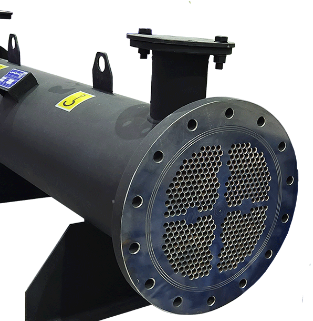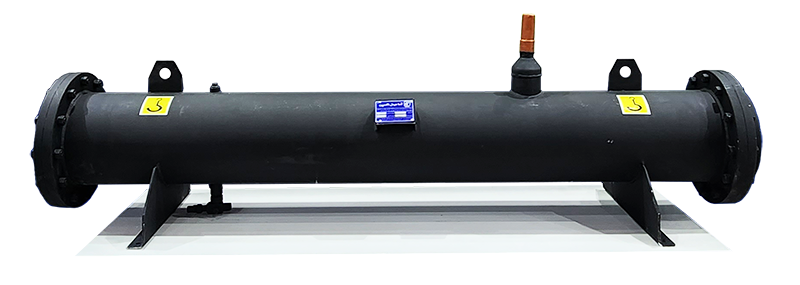U Type Evaporator
U Type Evaporator
Flooded Evaporator
Flooded Evaporator
Oil Cooler
Oil Cooler Heat Exchanger
Condenser
Condenser Heat Exchangers
Filter Driers
Filter driers

As the name suggests, condensers facilitate the phase change of a gas into a liquid. Commonly, in condensers, the hot gas flows through the shell while the cooling fluid circulates within the tubes. However, this arrangement is not mandatory or standardized. Designers must consider various factors such as the temperatures of the exchanging fluids, the type of media and exchanging fluid, fouling factors, allowable pressure drop, and more when making this decision.

In industries like oil, gas, petrochemical, and HVAC, it’s common to have the hot gas flow through the shell and the cooling fluid circulate within the tubes.
This configuration simplifies fluid dynamics and heat transfer calculations compared to evaporators. The hot gas enters the condenser in a superheated state, cools down slightly, enters the saturation phase, and then undergoes a phase change to a liquid state upon contact with the copper tube surfaces. Ideally, the liquid reaches a temperature very close to that of the cooling fluid. If the exchanger is designed correctly, subcooled liquid will be produced.


Importance of Proper Condenser Design
The amount and temperature of the subcooled liquid, the pressure drop of the cooling fluid, and the inlet and outlet temperature differences of the cooling fluid are crucial design parameters. The cooling fluid is often connected to a cooling tower for heat rejection, and the hot gas is involved in other processes with continuous temperature exchange. Variations in temperature and pressure can alter the density and thermodynamic properties of the fluids, disrupting the system’s equilibrium.
Therefore, proper condenser design is essential.
Improving Efficiency
The efficiency of heat exchangers, and heat transfer processes in general, depends on three primary factors:
Temperature difference between the two fluids
Heat transfer coefficient of the material
Heat transfer surface area
By increasing any of these factors individually or collectively, the heat capacity can be increased. Researchers have focused on these three factors and developed various methods to enhance efficiency.
Asamobadel Caspian Exchange Company uses grooved tubes in various formats for its condensers:
These tubes, typically made of copper and known as CLF (Condensing Low Fouling), are finned on the outside to increase heat transfer surface area and grooved on the inside to reduce fouling. Pipes that are finned on the outside to increase the heat exchange surface and grooved on the inside to reduce the amount of water sedimentation.
The design of the grooves and the choice of tube type for simulation software is crucial. Incorrect selection or simulation can lead to significantly different results.
So that in case of incorrect selection or unprincipled simulation of the pipe type for design software, the obtained result will be completely different.
Asamobadel Caspian uses various types of grooved tubes for its condensers.

Asamobadel Caspian has the capability to produce various types of grooves on copper tubes in-house using advanced equipment and machinery.
In the HVAC industry, especially in chillers and cold rooms, 3/4-inch copper tubes with thicknesses of 1.24 and 1.43 mm are commonly used.
The thickness of the copper tube is critical in condensers as it determines the durability and lifespan of the exchanger due to the fouling conditions when in contact with water.

